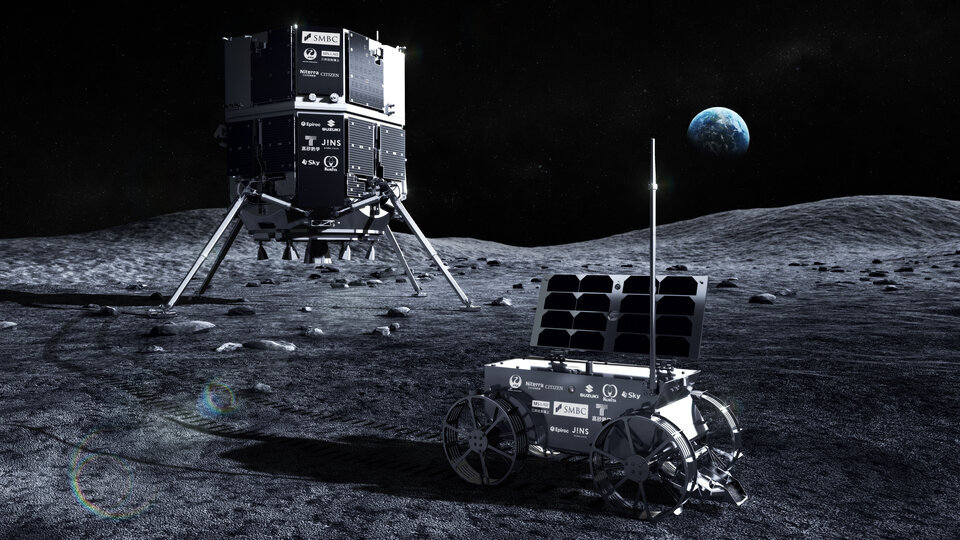4.06.2025

ispace's RESILIENCE lander and TENACIOUS micro rover on the Moon
Japanese lunar exploration company ispace will attempt to land its RESILIENCE spacecraft on the Moon no earlier than 5 June (CEST) 2025.
The European Space Agency’s (ESA) global network of ground stations is facilitating communication between the spacecraft and ispace mission control.
Click here to watch the ispace landing livestream in English.
The mission
RESILIENCE is the spacecraft element of ispace Mission 2 "SMBC x HAKUTO-R Venture Moon", the latest step in the company’s lunar exploration programme. It launched aboard a SpaceX Falcon 9 rocket from Cape Canaveral Space Force Base on 15 January 2025 and will attempt to land on the Moon’s Mare Frigoris in a few days’ time.
ispace operates RESILIENCE from its Mission Control Center in Tokyo. From there, a team monitors the spacecraft’s health, position, velocity and temperature, and sends commands to its onboard systems.
ESA’s role
ESA’s network of satellite communication antennas, controlled remotely from the European Space Operations Centre (ESOC) in Germany, is providing the radio link required to transmit and receive this information across space.

The three 35 metre deep space antennas in ESA’s Estrack network, located in Spain, Argentina and Australia, as well as the 15 metre antenna in French Guiana, are supporting the mission. The commercial Goonhilly Earth Station Ltd in the UK is also providing a significant share of the support via the extended Estrack network.

The Estrack stations supported RESILIENCE on launch day and throughout its months-long journey out into deep space and back again on a low-energy lunar transfer orbit. The spacecraft is now in lunar orbit and will soon begin its descent to the surface.
Estrack will track the spacecraft as it approaches the surface, receiving the crucial telemetry that ispace will need in order to confirm a successful landing.
The first European Moon rover
The RESILIENCE spacecraft will then spend roughly two weeks conducting experiments on the lunar surface for the mission’s commercial and institutional partners. The ESA and Goonhilly antennas will continue to transmit commands to and receive scientific data from the lander during this phase.
The lander will also deploy the first European-built lunar rover, named TENACIOUS. The company’s Luxembourg subsidiary (ispace EUROPE S.A.) designed, manufactured, and assembled the lightweight micro rover with co-funding from LuxIMPULSE, the Luxembourg National Space Programme, which is managed by the Luxembourg Space Agency and implemented by ESA.
ispace Europe operates a lunar test yard, a clean room and a control centre in Luxembourg. This control centre will be used to operate the rover during activities on the lunar surface. In 2020, NASA awarded ispace Europe a contract for the collection of lunar regolith samples within the scope of the Artemis programme. The rover’s activities will contribute to this effort.
Commands to TENACIOUS will be sent from ispace in Luxembourg to ESOC in nearby Germany before being relayed through ESA’s antennas to the surface of the Moon. There, the ispace lander will receive them and forward them to the rover. Data from the rover, such as images from its cameras, will travel back to Earth through the same chain of communication.
Quelle: ESA

